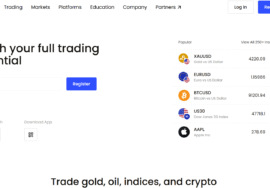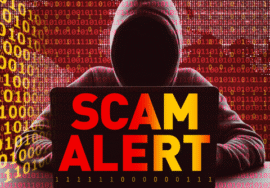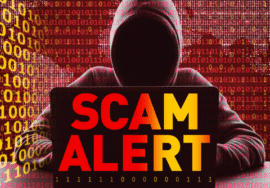
8 Devastating Red Flags That Prove You Should Avoid BeeBroker.io
8 Devastating Red Flags That Prove You Should Avoid BeeBroker.io

Introduction
A slick website, bold promises, and a handful of “success stories” can make any trading platform look legitimate. But when you scratch the surface of BeeBroker (beebroker.io), the picture changes fast: no credible license on display, third-party monitors flagging risks, and early user complaints about withdrawals. This article unpacks eight devastating red flags that signal why you should stay away from BeeBroker before your money gets trapped.
1) No Verifiable License: Marketing First, Oversight Last
Independent broker trackers indicate no valid, recognized regulatory authorization for BeeBroker. In plain English, there’s no reputable financial supervisor enforcing client-fund rules, capital requirements, or dispute resolution on this platform. That means you are relying on marketing instead of enforceable protections—classic regulatory arbitrage.
2) Early User Feedback Is Alarming
Fresh public feedback is already negative. On Trustpilot, BeeBroker currently shows a 100% one-star review footprint (at time of writing), with a report warning other users. Early reputational smoke often precedes fire—especially with new or unlicensed platforms.
3) Independent Reviews Warn of Classic Scam Patterns
External write-ups describe a familiar funnel: initial deposit → “retention agent” pressure → escalating asks for more money, while reputational padding is allegedly purchased via paid reviews elsewhere. Whether every detail is accurate or not, the pattern described is identical to many broker scams. Treat that as a serious risk signal.
4) Website Legal Pages Without Real Supervision
BeeBroker publishes Terms and a Privacy Policy, but posting legal text isn’t the same as being regulated. Nowhere in these pages is a top-tier license (FCA/ASIC/CySEC/NFA, etc.) verifiably listed, nor a regulator registry link you can cross-check. Legalese without licensure is often proof-of-reserves theater for brokers—meant to look compliant while delivering no binding protections.
5) “Easy In, Hard Out” Risk (The Withdrawal Gauntlet)
A hallmark of bad actors is smooth deposits paired with friction or fees on withdrawals. While we’re not alleging BeeBroker uses the specific $2,000 “unlock” tactic noted in other exchange complaints, the broader crypto/forex risk pattern is well-documented: surprise “premium” requirements, vague AML tax prepayments, or sudden verification hurdles. Be prepared for the possibility of a shrinking chargeback dispute window if delays stack up.
6) Third-Party Watchlists & Low-Trust Signals
Broker-evaluation sites group BeeBroker among unregulated/high-risk operations and caution would-be clients. Low trust scores and “no license” flags are not definitive by themselves—but when they align with missing authorizations and negative reviews, they become a coherent warning.
7) Offshore Posture Without Clarity Accountability Vacuum
Scam trackers repeatedly spotlight structures that resemble an offshore shell entity: masked WHOIS, thin company details, and ambiguous jurisdiction claims. If a dispute arises, where exactly do you pursue formal redress? Without a named, competent regulator and a clear corporate domicile tied to that regulator, you’re gambling with your rights.
8) High-Pressure Playbook & Reputation Padding
Reports describe tactics like retention agents or aggressive follow-ups pushing higher deposits—paired with warnings that glowing testimonials may be part of paid-reputation efforts. Real brokers win trust with verifiable supervision and clean withdrawal histories, not just polished ads and hand-picked “wins.” If you see urgency and upsells before proof and protection, step back.
✅ Extended Conclusion Why Steering Clear of BeeBroker Is Your Safest Move
The most important question with any broker is simple: Who regulates them—and where can I complain if something goes wrong? With BeeBroker, independent sources can’t confirm a credible license, and early public feedback is already negative. Those two facts alone move the platform out of the “speculative” bucket and into the high-risk bucket.
Consider the risk cascade:
- No recognized license → no enforceable client-fund safeguards, no capital rules, no mandated dispute mechanism. If profits are canceled, spreads manipulated, or withdrawals stalled, you don’t have a powerful supervisor to compel fairness.
- Early negative reviews → a smoke signal that real users are encountering issues. One review is not a court verdict, but when it’s 1-star across the board, caution should spike.
- External “scam-pattern” analyses → detailed accounts of upsells via “retention agents,” warnings about paid praise, and “too-good-to-be-true” pitches. While independent blogs can vary in quality, the behavior described matches a well-known script used by problematic brokers.
- Legal pages without real oversight → Terms & Privacy Policies are table stakes, not investor protection. Without a regulator—and a registry entry you can click and verify—those pages are theater, not a safety net.
- Withdrawal risk & time pressure → In many cases, people realize the problem only after requesting a payout. By then, their chargeback dispute window with a bank or card issuer may be narrowing. If crypto rails are used, you may need forensic help to trace funds—time-consuming and uncertain.
What to do instead (practical steps):
- Verify authorization first. Search your national regulator’s register (FCA, ASIC, NFA/CFTC, IIROC, CySEC, MAS, etc.). If BeeBroker (or any broker) isn’t listed—or the license doesn’t match—walk away. Don’t accept web badges; click through to the regulator entry.
- Test withdrawals early. If you’ve already opened an account, try withdrawing a small amount immediately. Any pushback (mystery fees, “premium unlocks,” new KYC hurdles) is your cue to stop funding.
- Document everything. Save screenshots of dashboards, balances, promised conditions, chat logs, and emails. If you must escalate, contemporaneous records are gold.
- Act fast if things go sideways. If you used a card or bank transfer, speak to your bank about a dispute/chargeback immediately—those windows can be short. If crypto was used, seek reputable specialists for tracing; avoid unsolicited “recovery” cold-calls.
- Favor top-tier, transparent brokers. Real firms showcase their license numbers and link to regulator profiles; they have long histories, named leadership, clear fee tables, and a track record of honoring withdrawals.
Bottom line: With BeeBroker, the missing license, early negative feedback, and third-party warnings outweigh the marketing gloss. In an industry where the difference between safety and loss is often credible supervision, BeeBroker hasn’t shown the essentials. Protect your capital and your sanity: skip the proof-of-reserves theater, avoid the offshore shell entity risk, and pick a broker whose regulation and reputation you can independently verify.








